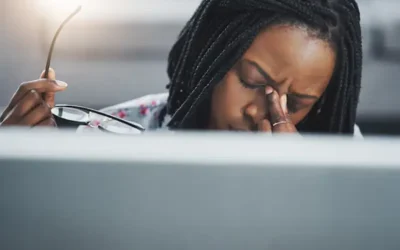Preventing eye injuries in daily life starts with making informed choices and adopting a proactive mindset. Your eyes are not only your windows to the world—they are essential tools for every daily activity, whether you’re at work, home, or outdoors. You can effectively minimize the risk of injury by using the right protective gear, observing workplace safety protocols, and implementing home safety measures. With simple preventative steps and a commitment to eye health, you set the foundation for long-lasting, clear vision and improved overall wellbeing.
At the same time, it’s crucial to acknowledge that everyday routines can expose your eyes to hidden hazards. Routine tasks from cleaning the house to enjoying a recreational sport can introduce risks if proper precautions aren’t taken. By understanding potential dangers and equipping yourself with expert advice on protective eyewear, emergency responses, and safety habits, you empower yourself to safeguard your vision. This guide delves into practical strategies and actionable tips to help you protect one of your most vital senses, ensuring you maintain healthy sight for years to come.
The Importance of Eye Safety
Often we take for granted the role our eyes play in our daily lives, only to realize too late what an injury can cost us. Maintaining good eye safety is not just about avoiding immediate discomfort; it’s about safeguarding your long-term quality of life.
Impacts of Eye Injuries
- Long-Term Consequences: Even minor injuries can lead to lasting vision impairment.
- Increased Medical Costs: Emergencies related to eye injuries can result in expensive treatments.
- Daily Disruptions: Simple tasks may become overwhelming if your vision is compromised.
Understanding these impacts is crucial for motivating you to adopt effective preventative practices.
Protective Gear and Eyewear Recommendations
One of the simplest ways to prevent eye injuries is to use the right protective gear. Customized eyewear can serve as a powerful barrier against hazards both indoors and outdoors.
Types of Protective Eyewear
- Safety Goggles: Ideal for workplaces and laboratories where chemicals, dust, or debris may pose a risk.
- Sports Glasses: Engineered to absorb shocks and prevent impacts during physical activities.
- Prescription Safety Glasses: These offer both corrective vision support and protection, integrating seamlessly into your daily routine.
Choosing the right type of eyewear based on your activities is the first step towards solid eye protection.
Tips for Choosing the Right Protective Gear
- Certification Matters: Look for gear that meets ANSI, OSHA, or other reputable safety standards.
- Comfort and Fit: Ensure the protective eyewear fits snugly; an uncomfortable pair is less likely to be used consistently.
- Durability: High-quality materials will offer not only better protection but also a longer lifespan.
- Maintenance: Regular cleaning and proper storage prevent deterioration and maintain clarity for safe use.
By following these guidelines, you can find protective gear that not only looks great but also effectively shields your eyes from potential harm.
Workplace Safety Tips
Your place of work can often present hidden dangers. Whether you work in construction, manufacturing, or even an office environment, potential hazards lurk around the corner.
Common Workplace Hazards
- Chemical Splashes: Exposure to industrial chemicals can lead to serious eye injuries.
- Flying Debris: In many jobs, there’s a risk of small particles impacting the eye.
- Intense Lighting and Radiation: Environments with high UV or infrared exposure can gradually damage vision.
Being aware of these hazards is a crucial first step in developing a safe work culture.
Preventative Measures in the Work Environment
- Regular Training: Employers should provide safety training sessions that highlight the importance of eye protection.
- Mandatory Protective Equipment: Implement policies that require the use of safety goggles or other protective wear.
- Clear Signage: Mark hazardous areas clearly to remind employees to exercise caution.
- Routine Equipment Checks: Regular inspections of safety equipment ensure that everything is in working order.
A safety-conscious work environment not only prevents injuries but also promotes overall employee well-being.
Home Safety Strategies
Many people assume their home is a safe haven, yet everyday activities can unexpectedly expose you to eye injuries. Whether you’re tackling a DIY project or simply cleaning, the home environment warrants just as much attention.
Preventing Accidents at Home
- Secure Storage: Keep cleaning supplies, chemicals, and other hazardous materials in locked cabinets or out of reach.
- Use Protective Gear: If you’re using power tools, engaging in crafting, or mixing chemicals, wear suitable protective eyewear.
- Clutter-Free Zones: Reducing clutter can eliminate tripping hazards that might result in accidents affecting your face and eyes.
- Regular Inspections: Check your home for potential hazards, such as loose objects or broken glass, that could contribute to an accident.
Child and Elderly Safety at Home
- For Children: Ensure that hazardous materials are stored securely. Consider safety glasses for young ones during potentially risky activities like science projects.
- For the Elderly: Adapt your home with better lighting, non-slip mats, and clear demarcation of risk areas. This can help prevent falls or accidents that may injure the eyes.
By taking these steps, you make your home a safe haven for everyone, regardless of age.
Best Practices for Sports and Outdoor Activities
Active pursuits are fun and healthy, but they also come with inherent risks to your eyes—especially during high-impact sports or outdoor adventures.
Protective Measures for Sports
- Sport-Specific Eyewear: Invest in goggles that are designed for your particular sport, ensuring maximum protection during activities like basketball, racquetball, or hockey.
- Shock-Absorbing Materials: Look for eyewear that is built to withstand the pressures and impacts associated with vigorous activities.
- Proper Fit: Make sure that your sports eyewear adheres well so that it doesn’t slip during play, which could expose your eyes to harm.
Eyewear in Outdoor Recreation
- UV Protection is Key: Sunglasses with 100% UV protection are essential for shielding your eyes from the sun’s harmful rays.
- Polarized Lenses: They help reduce glare, making them perfect for water sports, cycling, or hiking.
- Versatility: Consider choosing eyewear that can transition between sports and everyday outdoor use, offering both style and function.
Ensuring proper eye protection during recreational activities not only enhances performance but also significantly reduces your risk of injuries.
Emergency Response Tips
Even with the best precautions, accidents can happen unexpectedly. Knowing how to react during an eye injury emergency is vital for preserving your vision.
Immediate Actions After an Eye Injury
- Stay Calm: Taking deep breaths can help you remain composed and reduce the risk of further damage.
- Avoid Rubbing: Rubbing your eye can lead to more severe irritation or injury.
- Rinse Thoroughly: Use clean water or a saline solution to gently flush out any harmful substances or debris.
- Apply a Cold Compress: This helps reduce swelling and soothe pain; however, do not press too hard on the injured area.
By following these steps, you provide your eye with the best chance of recovery until professional help is obtained.
When to Seek Medical Help
- Persistent Pain or Blurred Vision: These symptoms indicate that the injury might be more serious than it appears.
- Severe Redness or Swelling: This could be a sign of an infection or a deep tissue injury requiring immediate intervention.
- Chemical or Impact Injuries: If chemicals or high-velocity impacts are involved, do not hesitate to seek medical evaluation right away.
Quick and appropriate action can mean the difference between a temporary setback and permanent damage.
Conclusion
Protecting your eyes is essential for preserving not only your vision but your overall quality of life. From investing in quality protective eyewear to embracing safety protocols at work, home, and during sports, every small step makes a huge impact. By incorporating these strategies into your daily routine, you not only minimize your risk of injury but also set a healthy example for those around you. Remember, your vision is irreplaceable, treat it with the care and respect it deserves.
FAQ: Your questions answered
What type of protective eyewear should I use for everyday tasks?
Consider high-quality safety glasses with impact-resistant lenses that protect against minor debris and accidental splashes for everyday activities.
Can prescription glasses be used as protective eyewear?
Yes, many prescription glasses offer safety features. Alternatively, you can opt for prescription safety glasses or clip-on lenses designed to provide additional protection without compromising vision.
How can I tell if my workplace is taking eye safety seriously?
Look for comprehensive safety protocols, regular training sessions, clear signage in hazardous areas, and readily accessible, properly maintained protective gear.
What should I do immediately if I get a chemical splash in my eye at home?
Quickly flush your eye with lukewarm water for at least 15 minutes, and if the irritation persists or vision worsens, seek medical assistance as soon as possible.
Which sunglasses are best for outdoor activities?
Choose sunglasses that offer 100% UV protection. Polarized lenses are also highly recommended, as they reduce glare and help maintain clear vision during various outdoor pursuits.



